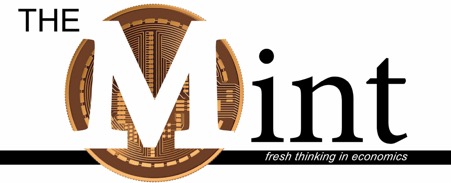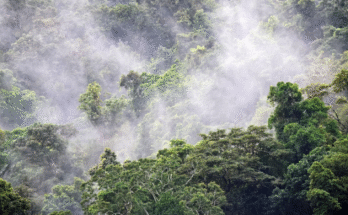Sofia Casas warns of another shade of greenwash.
With COP-30 approaching this November in Belém – in the heart of the Amazon – the term “bioeconomy” has become a powerful buzzword. Since its G20 presidency last year, Brazil has promoted it as a sustainable solution to climate change, one that turns the forest into an economic asset while protecting the livelihoods of rainforest residents. Central to this vision is the integration of indigenous and traditional knowledge into economic development. However, in practice, the ‘bioeconomy’ initiatives raise important questions about whose interests are genuinely being served.
This narrative is misleading.
Despite its promising name, “bioeconomy” lacks a clear definition (see box, Brazil”s definition). This ambiguity opens the door to wildly different — and often contradictory — interpretations. It is marketed as combining ancestral knowledge with scientific innovation, but in practice, the label allows a wide array of projects to fall under its umbrella.
“A model of productive and economic development based on values of justice, ethics, and inclusion, capable of generating products, processes, and services efficiently, based on the sustainable use, regeneration, and conservation of biodiversity, guided by scientific and traditional knowledge and its innovations and technologies, with a view to adding value, generating jobs and income, sustainability, and climate balance.”
This definition mentions traditional knowledge, but remains vague. A 2016 study from the University of Oslo outlines three competing visions of bioeconomy:
- biotechnology – focused on developing products from plant and animal sources, like vaccines or medicines;
- bioresource – centered on processing biomass for biofuels and bioplastics; and
- bioecological – prioritising conservation and sustainable use of biodiversity.
There is a growing effort to frame bioeconomy as a break from extractivism and environmental destruction — but this narrative is misleading. Corporate-led climate solutions rarely address the structural drivers of ecological crises. While the bioeconomy is often associated with goals such as food security and sustainability, and the G20 promotes it through calls for “sustainable consumption and production,” the question remains: does this represent a radical challenge to the capitalist system, or just an attempt to capitalise on rising consumer demand for sustainability?
Bioeconomy as a concept was first articulated in the 1970s by Romanian economist Nicholas Gheorgescu-Roegen, who applied the principles of biophysics to economics, emphasising the natural limits of growth. Since then, it has been adopted by a wide range of sectors, often with little connection to its original meaning.
The bioeconomy risks becoming yet another tool for market expansion.
Much like the elusive concept of “sustainable development,” bioeconomy – without a clear definition – can mean both everything and nothing. In a world where natural resources like carbon are increasingly financialised, the bioeconomy risks becoming yet another tool for market expansion rather than a genuine environmental solution.
In Brazil, studies such as the Getulio Vargas Foundations’ 2022 GDP of the Bioeconomy report count any sector using “renewable biological resources” — including agribusiness, livestock, and biofuels — as part of the bioeconomy. However, this framing ignores how those resources are extracted. Counting pesticide-heavy monocultures as part of the “bio” economy is, at best, controversial.
Other Amazonian countries, such as Bolivia, have pushed back against the term altogether, wary of its close ties to the commodification of nature. In Brazil, the term is increasingly used by mining, agribusiness, oil, logging, and real estate sectors to justify environmentally destructive projects. The World Bioeconomy Forum hosted in Belém in 2021, was sponsored by Bayer (a leading pesticide producer), Agropalma, the U.S. meat giant JBS, and heavily promoted by the Brazilian Agribusiness Association, while social movements were largely absent.
Biofuels, often produced from sugarcane or corn monocultures, continue to drive deforestation, contaminate water sources, and displace local communities. Yet these contradictions are pushed aside in favour of a broader political-economic project: a “bioeconomy” deeply entangled with global financial speculation.
Bioeconomy or bioextractivism?
The bioeconomy is often presented as a way for traditional communities to protect their territories and customs — but this promise rarely holds in practice. These communities already maintain forms of life that exist largely outside profit, class division, and ecological degradation. Their existence shows that alternative relationships with nature are possible – yet threatened by the continued exploitation of their ancestral lands. Financial incentives associated with the expansion of the bioeconomy risk aggravating land speculation and forced displacement.
The crucial role of agribusiness in Brazil connects the bioeconomy to socio-environmental and territorial conflicts. The PlanBio programme led by the government of Pará — host of COP-30 — has faced criticism for favouring industry and profit over small-scale production. In the working group created to draft the plan in 2021, the government issued apublic call for 30 civil society organisations, social movements, and NGOs. However, decision-making power was far from equal: the Pará state government appointed seven representatives, the federal government one, and civil society was allocated a single vote – assigned to an NGO rather than a grassroots organisation. This group is not an isolated example of the symbolic calls for participation that are then effectively sidelined.
In a 2023 interview with DW Brazil, indigenous writer and philosopher, Ailton Krenak, criticised the concept: “What they call bioeconomy is just an adjustment of the terms and tastes of capitalism,”
There is increasing concern that bioeconomy discourse is being exploited by agribusiness and state actors to adopt the language of sustainability while pursuing profits.
The Brazilian National Bioeconomy Strategy, established in 2024, claims to expand the market participation of Indigenous peoples, traditional communities, and family farmers. But many feel excluded. As early as 2021, Mariazinha Baré of the Coordination of Indigenous Organisations of the Brazilian Amazon (COIAB) asked: “At what point do we fit into this, and what is the relationship between this bioeconomy and our ancient economy?”
There is increasing concern that bioeconomy discourse is being exploited by agribusiness and state actors to adopt the language of sustainability while pursuing profits from lands traditionally safeguarded by indigenous, Quilombola, and other customary communities (see box – Out of Africa). We must remain especially alert to the material and symbolic theft of ancestral knowledge, often taken without consent, credit, or fair compensation.
Despite constitutional guarantees of land rights since 1988, only a small fraction of quilombola communities have received official land titles, leaving most vulnerable to displacement by commercial interests such as mining and real estate development. Their deep connection to land is not just territorial but cultural — quilombos represent a living heritage of African and indigenous traditions that sustain biodiversity through sustainable farming and cooperative practices.
In an interview with NACLA, Quilombola leader, Maria José Souza of the São José do Icatu community explained:
“We participated partially in the process of building the bioeconomy plan and other public policies. (…) The government wants to consult Quilombola communities as if all territories were the same. There are more than 500 communities, and they want to hold just one consultation in the region, with ten representatives. But our community alone has 600 people.”
The current patent system, which is focused on laboratory experiments, is poorly suited to recognise indigenous traditional knowledge.
In this way, much of the public narrative around the bioeconomy relies on symbolic capture. The current patent system, which is focused on laboratory experiments, is poorly suited to recognise indigenous traditional knowledge. The kambô frog, used by several Amazonian indigenous groups for its medicinal properties, already has 11 registered patents — all in the Global North. Traditional knowledge is aestheticised and rebranded as innovation, while the systems that support it remain under threat. In this sense, the bioeconomy risks becoming a marketing tactic rather than a fundamental transformation.
As world leaders discuss the bioeconomy in the coming months, it is essential to ensure that the term doesn’t become an empty signifier – used to justify business-as-usual while masking its true impact on people and the biodiversity/the environment.
The bioeconomy does not exist in isolation. In line with the carbon market and REDD+ initiatives, it appears as another “market-based solution” within a context where neoliberal principles influence both the state and civil society. It is essential to ensure that bioeconomy initiatives represent a break from past forms of exploitation, rather than merely a rebranding.
If we are serious about sustainability and social justice, we must move beyond token consultation. Recognising the ecological knowledge of traditional communities is only the starting point. What’s needed now is to place them at the centre – to shape, implement, and govern the policies that affect their territories and ways of live.



